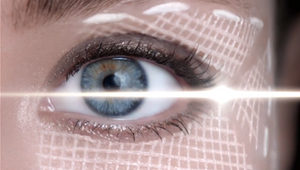
Unravelling to Re-stitch: A Sensitive Future for Luxury Envisioned by Baptiste Brousse

As the real and virtual blur under the weight of algorithms, what remains of luxury, if not its mythologies?
In a world saturated with images, simulacra, and constant storytelling, will tomorrow’s communication need to unlearn in order to reinvent itself? This is one of the questions raised by Baptiste Brousse, an art director and content creator at Publicis Luxe, trained at the Beaux-Arts and shaped between Paris and Milan, cities where the imaginary of luxury is both written and dismantled. In his daily practice, he combines visual intuition, critical thinking and strategic insight to interrogate and sometimes disrupt the conventional formats of communication used by leading luxury and beauty houses.
“I had the opportunity to study fashion in Milan during the pandemic. That moment of rupture left a mark on me. Nothing functioned as it had before. Production halted. Interactions were suspended. And yet, it was in that stillness that a new language began to take shape.”
That language is one of immersive platforms, natively digital content, a luxury less institutional, more permeable, almost vulnerable, but deeply connected. During that time, he wrote a 300-page dissertation, built around several interviews with designers, researchers and scientists, exploring a core intuition: the health crisis acted as an accelerator, revealing both structural flaws and untapped creative potential in the field of communication.
Catwalks once reserved for an elite audience became shows open to all, streamed via Instagram, TikTok, even into the metaverse.
“Luxury was forced to reinvent its codes, its narratives, its points of access,” says Baptiste.
Creative Boom and Format Hybridisation
Since returning to Paris, he has carved out a singular path, blending art direction, content strategy and sociocultural reflection. His hybrid approach, fuelled as much by visual arts as by technological transformations, naturally led him to Publicis Luxe, where he now guides heritage brands through their digital transitions.
“What fascinates me is the fertile tension between tradition and disruption. How can you convey the timeless identity of a luxury house through innovative digital formats that capture attention and stir emotion on platforms like TikTok? How do you generate resonance without fetishising the ‘new’ for its own sake?”
To do so, he draws upon a rich visual culture, an ability to read subtle signals, and above all, a sensitivity to authenticity, nuance and emotion. This sensibility permeates the strategies he develops for luxury clients, always vigilant not to dehumanise the message in the name of modernity.
AI: Not a Threat, But a Creative Lever
For Baptiste, the arrival of AI is not a threat to creativity, but a turning point, an opportunity to go further, to think differently, to break down formats, uses and narratives.
“AI helps overcome technical limits, generate visual worlds quickly, and most importantly imagine scenarios we haven’t yet seen, as long as the human remains at the heart of it. It must be a tool, not a totem,” he says.
Indeed, the key is not the technology itself, but how it is used. AI can become a powerful ally to deepen reflection, explore new ideas, and reimagine the storytelling of luxury. But used superficially, to speed up production or churn out generic content, AI risks falling into the very pitfalls denounced by the Anti-Fashion Project: oversaturation and loss of authenticity. That’s why the true creative potential of AI lies in the conscious and ethical use of the tool.
Anti-Fashion: A Manifesto for a Changing Luxury
“This text is fundamental,” says Baptitse. “It already outlines the foundations of a type of marketing that’s not a façade, but a space for questioning. It calls for a slower, more porous, more sincere mode of fashion. It’s anything but nostalgic. It’s a manifesto of resistance against saturation, against visual overkill.”
Through that lens, he decodes luxury not as a fixed system, but as a field of exploration, constantly in tension with its own limits. He observes the same in his own work: the brands that dare to be transparent, to co-create, to embrace even their own fragility, are often the ones building the strongest emotional connections today.
Those willing to unravel their assumptions in order to re-stitch a dialogue with their audiences.
What Comes Next?
In a world where the real grows blurry, where the image precedes experience, and where AI is reshaping the very texture of desire, one question remains: what will luxury be in 10 years?
If we listen to today’s thinkers – Byung-Chul Han with his ‘transparency society’, Donna Haraway’s call for stories rooted in complexity, or Li Edelkoort’s insights on the end of the ‘fashion system’ – luxury can no longer be just a shop window.
It must become vision, engagement, friction. This is no longer about aesthetics, but ethics. Will tomorrow’s luxury be capable of slowing down? Of listening? Of inventing new ways to inspire longing?
For Baptiste, it’s not about nostalgia but creative lucidity. “We are living in a time of unravelling. And that’s a good thing. Because it is within that rupture that a new narrative can emerge. One that’s more sensitive, more free, and deeply human.”















